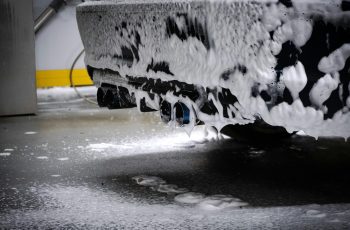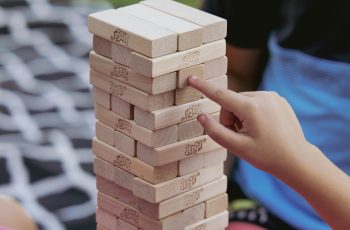In this article, you will discover the practical and efficient method of sharpening your tools and blades using electric die grinders. Whether you’re a DIY enthusiast or a professional, these powerful tools offer a precise and speedy way to restore the sharpness of various cutting implements. By exploring the techniques and tips outlined here, you’ll be able to effortlessly maintain the quality and longevity of your tools, saving you both time and money. So let’s dive into the world of electric die grinders and uncover the secrets of sharpening!
What is an electric die grinder?
Definition and features
An electric die grinder, also known as a rotary tool, is a handheld power tool that uses a rotating motor to operate various grinding, cutting, and polishing attachments. It is specifically designed for precision work and is commonly used in metalworking, woodworking, and automotive applications. Electric die grinders are compact, lightweight, and easy to handle, making them ideal for tasks that require intricate and detailed work. They offer high-speed rotation and variable speed options, allowing users to adjust the tool’s performance according to the task at hand.
Types of electric die grinders
There are two main types of electric die grinders: corded and cordless. Corded electric die grinders are powered by an electrical outlet and provide a constant source of power, making them suitable for continuous use without the need for recharging. Cordless electric die grinders, on the other hand, are powered by rechargeable batteries, providing users with the convenience of portability and freedom of movement. They are particularly useful in applications where access to a power outlet is limited or when working in remote locations. Both types offer similar features and functionality, but the choice between corded and cordless will depend on the specific needs and preferences of the user.
Importance of sharpening tools and blades
Enhances performance and efficiency
Sharpening tools and blades regularly using an electric die grinder is essential for achieving optimal performance and efficiency. Over time, tools and blades can become dull due to normal wear and tear or prolonged use. Dull tools not only require more effort to use but also produce poor results. By sharpening the cutting edges of tools and blades, you restore their sharpness and ensure clean and precise cuts. This allows you to work more efficiently, saving both time and energy.
Extends tool lifespan
Regularly sharpening your tools and blades with an electric die grinder can significantly extend their lifespan. Dull edges cause tools and blades to work harder, leading to increased wear and tear. Without proper sharpening, the cutting edges can become chipped, damaged, or even break, rendering the tool or blade unusable. By maintaining sharp edges, you reduce the stress on the tool or blade, minimizing the risk of damage and prolonging its overall lifespan.
Ensures safety during use
Using sharp tools and blades is essential for safety during various tasks. Dull edges can cause slips and unexpected movements, increasing the risk of accidents and injuries. When using an electric die grinder to sharpen your tools and blades, you not only improve their cutting performance but also ensure safer operation. Sharp tools require less force to use, preventing unnecessary strain on your hand and reducing the chances of accidental slips or mishaps.

Understanding the sharpening process
Why tools and blades become dull
Tools and blades become dull over time due to their constant interaction with the material they are cutting or shaping. The cutting edges of tools and blades experience friction and repeated contact, causing microscopic imperfections to form on their surfaces. These imperfections, or burrs, gradually dull the cutting edges and reduce the tool’s effectiveness. Additionally, heat generated during use can also contribute to the dulling of tools and blades by causing the metal to soften and wear down.
The need for regular sharpening
Regular sharpening of tools and blades is crucial to maintain their functionality and effectiveness. By sharpening these tools, you remove the burrs and restore the sharpness of the cutting edges. The frequency of sharpening will depend on the type of tool or blade, the intensity of use, and the material being worked on. Tools and blades that are used frequently or on harder materials may require more frequent sharpening compared to those used less frequently or on softer materials. Regular sharpening ensures that your tools and blades are always in optimal condition for efficient and safe use.
Choosing the right electric die grinder for sharpening
Considerations for selecting an electric die grinder
When selecting an electric die grinder for sharpening tools and blades, there are several factors to consider. Firstly, consider the power of the tool. Higher power output allows for faster and more efficient grinding. Additionally, speed options are also crucial, as different materials and tasks may require varying speeds. Variable speed grinders provide more versatility in terms of adjusting the tool’s performance to specific needs. Furthermore, ergonomics and comfort should not be overlooked. Opt for a grinder with a comfortable grip and ergonomic design to ensure ease of use and minimize fatigue during prolonged sharpening sessions. Lastly, consider the availability of attachments and accessories. A wide range of attachments and accessories will allow you to tackle different sharpening tasks with ease and precision.
Power and speed options
The power output of an electric die grinder is typically measured in watts or amps. Higher power output provides more torque and faster rotation, allowing for efficient material removal during sharpening. It is advisable to choose a grinder with sufficient power to handle the tasks you commonly perform. Furthermore, variable speed options are desirable for a versatile sharpening experience. Different materials and blades may require different speeds for the optimal sharpening result. Having the ability to adjust the speed of your grinder will ensure the most precise and efficient sharpening process.
Ergonomics and comfort
Since sharpening tools and blades can be a time-consuming process, it is crucial to select an electric die grinder that offers comfort and ergonomics. Look for a grinder with a comfortable grip that fits well in your hand, reducing the strain and fatigue associated with extended use. Additionally, a lightweight design can contribute to increased maneuverability and ease of handling. Take the time to hold different grinders and choose the one that feels the most comfortable and ergonomic for your needs.
Availability of attachments and accessories
Having a variety of attachments and accessories for your electric die grinder enhances its versatility for sharpening various tools and blades. Different grinding wheels, honing stones, or buffing attachments can be used depending on the type of sharpening required. The availability of a wide range of attachments and accessories ensures that you have the right tool for the specific sharpening task at hand. Consider a grinder that offers a variety of compatible attachments or has a range of accessories that can be purchased separately to suit your needs.

Preparing the tools and blades for sharpening
Cleaning and inspection
Before sharpening your tools and blades with an electric die grinder, it is essential to clean and inspect them thoroughly. Remove any debris, dirt, or rust that may have accumulated on the surface. Use a wire brush or a cleaning solution to remove stubborn stains or corrosion if necessary. Inspect the tool or blade for any visible damage, such as chips or cracks. Addressing any visible issues before sharpening will ensure a smoother sharpening process and prevent further damage.
Securing the tool or blade
To ensure safety and accurate sharpening, it is crucial to properly secure the tool or blade in a vice or clamp. This prevents the tool or blade from moving or vibrating during the sharpening process, ensuring consistent and precise sharpening. Make sure the tool or blade is firmly held in place, allowing you to focus on the sharpening technique without worrying about unwanted movements.
Sharpening techniques using an electric die grinder
Grinding vs. honing
When it comes to sharpening tools and blades using an electric die grinder, there are two main techniques: grinding and honing. Grinding involves removing material from the cutting edge to restore its sharpness. This technique is suitable for reshaping or repairing the edges of tools or blades that have become excessively worn or damaged. Honing, on the other hand, involves refining the cutting edge to achieve a finer, razor-sharp finish. It is typically done after grinding to remove any burrs and polish the edge, resulting in a smoother and more precise cutting surface.
Proper tool positioning and movement
To achieve optimal sharpening results, it is crucial to position the tool or blade correctly and maintain proper movement during the sharpening process. Keep the tool or blade at a consistent angle against the grinding wheel or attachment. The specific angle will depend on the type of tool or blade being sharpened, so refer to the manufacturer’s guidelines or sharpening instructions. Move the tool or blade in a steady and controlled motion, ensuring even and uniform sharpening along the entire cutting edge. Avoid applying excessive pressure, as it can lead to uneven sharpening or damage to the tool or blade.
Using the appropriate grinding wheel or attachment
Choosing the right grinding wheel or attachment for sharpening is essential to achieve the desired results. Different materials and tools require specific grinding wheels or attachments to ensure effective and accurate sharpening. For example, a diamond grinding wheel is ideal for sharpening carbide tools, while a silicon carbide grinding wheel is suitable for sharpening high-speed steel tools. Refer to the manufacturer’s recommendations or consult a professional to determine the appropriate grinding wheel or attachment for your specific sharpening needs.
Maintaining a consistent angle and pressure
Maintaining a consistent angle and pressure throughout the sharpening process is crucial for achieving uniform and precise results. The angle at which the tool or blade meets the grinding wheel or attachment determines the cutting geometry and sharpness. If the angle varies during the sharpening process, the cutting performance may be compromised. Apply consistent pressure against the grinding wheel or attachment to ensure even material removal and prevent uneven sharpening. Take your time and focus on maintaining a steady hand and consistent technique for the best sharpening outcome.

Safety precautions during sharpening
Wearing appropriate personal protective equipment
When sharpening tools and blades using an electric die grinder, it is essential to wear appropriate personal protective equipment (PPE). Safety glasses or goggles should be worn to protect your eyes from sparks, debris, and dust generated during the sharpening process. Additionally, a dust mask or respirator is advisable to prevent inhalation of fine particles or metal dust. Consider wearing gloves to protect your hands from potential cuts or injuries. PPE ensures that you can work safely and minimize the risk of accidents or health hazards.
Securing the workpiece
To ensure safety during sharpening, it is important to properly secure the workpiece. This can be done by using a vice, clamp, or suitable work-holding device to immobilize the tool or blade being sharpened. A securely held workpiece prevents unwanted movements or vibrations that can lead to accidents or inaccuracies during sharpening. Take the time to securely fasten the workpiece before starting the sharpening process, ensuring a stable and controlled environment.
Avoiding overheating
During the sharpening process, the friction between the tool or blade and the grinding wheel or attachment can generate heat. Excessive heat buildup can damage the cutting edge or even change its temper, affecting its performance and durability. To avoid overheating, periodically dip the tool or blade into water or coolant to keep it cool. This helps to dissipate heat and prevents the tool or blade from becoming overheated. By taking the necessary precautions, you can ensure that the sharpening process is efficient and does not compromise the integrity of the tool or blade.
Proper handling and storage of the grinder
Proper handling and storage of the electric die grinder is crucial for maintaining safety during sharpening and prolonging the lifespan of the tool. Always hold the grinder firmly and securely, keeping a good grip on the handle to prevent accidental slips or dropping. After use, turn off the grinder and unplug it from the power source. Store the grinder in a clean and dry place away from moisture or extreme temperatures. Additionally, keep the grinder in a secure location to prevent unauthorized use or access, ensuring the safety of yourself and others.
Maintaining and caring for electric die grinders
Regular cleaning and inspection
Regular cleaning and inspection of your electric die grinder are essential for its proper functioning and longevity. After each use, remove any debris, dust, or metal shavings that may have accumulated on the surface and inside the tool. Use a brush or compressed air to clean hard-to-reach areas. Inspect the grinder for any signs of damage, such as frayed wires or loose components. Address any issues promptly to prevent further damage or malfunction. By practicing regular cleaning and inspection, you can ensure that your grinder remains in optimal condition for sharpening and other tasks.
Lubrication and maintenance
Proper lubrication and maintenance of your electric die grinder are crucial for its smooth operation and extended lifespan. Check the manufacturer’s guidelines or instruction manual for specific lubrication requirements. Apply the recommended lubricant to the appropriate areas, such as the spindle or bearings, to reduce friction and ensure smooth rotation. Regularly check and tighten any loose screws or components. Additionally, keep the grinder free from moisture or excessive dust accumulation. Proper maintenance ensures that your grinder remains in optimal condition and performs effectively during the sharpening process.
Proper storage to prevent damage
When not in use, it is important to store your electric die grinder properly to prevent damage and maintain its performance. Keep the grinder in a clean and dry area, away from moisture or extreme temperatures. Store it in a secure location to prevent accidental damage or unauthorized access. Additionally, consider using a protective case or carrying bag to protect the grinder from impact or dust. Proper storage ensures that your electric die grinder remains in good condition and is ready for use whenever you need to sharpen your tools and blades.
Common mistakes to avoid when sharpening
Overgrinding or removing too much material
One common mistake to avoid when sharpening tools and blades is overgrinding or removing too much material. Overgrinding can weaken the cutting edge or alter its geometry, reducing its effectiveness or even rendering the tool or blade unusable. It is important to approach sharpening with patience and make small adjustments to the cutting edge as necessary. Take breaks to inspect the progress and avoid excessive material removal that can compromise the integrity of the tool or blade.
Incorrect angle or bevel
Another mistake to avoid is sharpening at an incorrect angle or bevel. Different tools and blades require specific angles or bevels to achieve their optimal cutting performance. Sharpening at the wrong angle can result in uneven or ineffective cutting, reducing the efficiency and functionality of the tool or blade. Always refer to the manufacturer’s guidelines or sharpening instructions to determine the correct angle or bevel for the specific tool or blade being sharpened. Take the time to set up the grinder and adjust the angle accurately to achieve the desired sharpening result.
Excessive heat buildup
Allowing excessive heat buildup during sharpening is a mistake that can negatively impact the tool or blade being sharpened. As mentioned earlier, heat can cause the metal to soften, affecting the durability and effectiveness of the cutting edge. To avoid excessive heat buildup, use water or coolant to cool down the tool or blade periodically during the sharpening process. This dissipates the heat and prevents overheating, ensuring that the tool or blade remains in optimal condition for continued use.
Using the wrong type of grinding wheel
Using the wrong type of grinding wheel or attachment is a mistake that can lead to ineffective sharpening or damage to the tool or blade. Different materials and tools require specific grinding wheels or attachments to achieve the best sharpening results. Using a grinding wheel that is not suitable for the material or tool being sharpened may result in dull edges or inconsistent sharpening. Always refer to the manufacturer’s recommendations or consult a professional to determine the appropriate grinding wheel or attachment for your specific sharpening needs.
Benefits of sharpening tools and blades with electric die grinders
Improved cutting performance
Sharpening tools and blades regularly with an electric die grinder improves their cutting performance. By restoring the sharpness of the cutting edges, you ensure cleaner and more precise cuts. Sharp tools and blades require less effort and force to use, resulting in increased efficiency and reduced fatigue. Whether you are cutting through metal, wood, or other materials, a properly sharpened tool or blade will deliver superior cutting performance, allowing you to work more effectively and achieve better results.
Cost-effective compared to replacement
Sharpening your tools and blades with an electric die grinder is a cost-effective alternative to purchasing replacements. Dull or damaged tools often lead individuals to replace them entirely, incurring additional expenses. By regularly sharpening your tools and blades, you can extend their lifespan and avoid the need for frequent replacements. This not only saves you money in the long run but also ensures that you have reliable and effective tools at your disposal whenever the need arises.
Versatile for various tool and blade types
Electric die grinders offer versatility when sharpening various tool and blade types. They can be used to sharpen a wide range of tools, including chisels, drill bits, knives, scissors, and more. Additionally, they are well-suited for sharpening different types of blades, such as those found on lawnmowers, chainsaws, or hedge trimmers. The availability of various grinding wheels and attachments allows for customized sharpening based on the specific tool or blade being sharpened. Electric die grinders provide the flexibility and precision required to maintain a sharp cutting edge on different tools and blades, making them an invaluable tool for any DIY enthusiast or professional.



